Stuck inside and have a free morning this weekend? That’s plenty of time to compete one of these easy 43 home maintenance projects you’ve been neglecting.
43 Home Maintenance Projects You’ve Been Neglecting
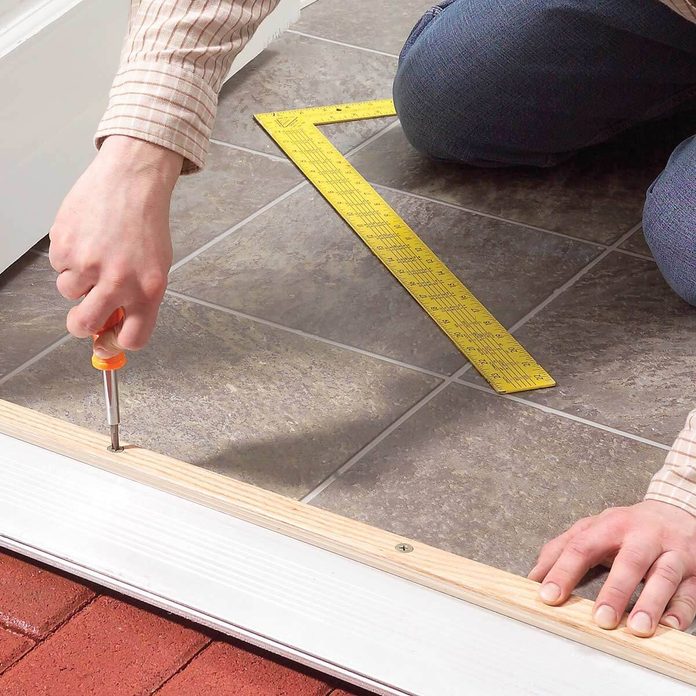
Raise an Adjustable Entry Door Threshold
Those big screw heads in the threshold of a newer entry door aren’t just decorative; they raise or lower a narrow strip set in the threshold. So if you’ve noticed a draft under the door, try this: On a sunny day, turn off the lights and close nearby curtains. Lie down and look for daylight under the door. A sliver of light sneaking in at both corners of the door is normal. But if you see light between the threshold and the door, grab your screwdriver. Here’s how to raise the threshold.
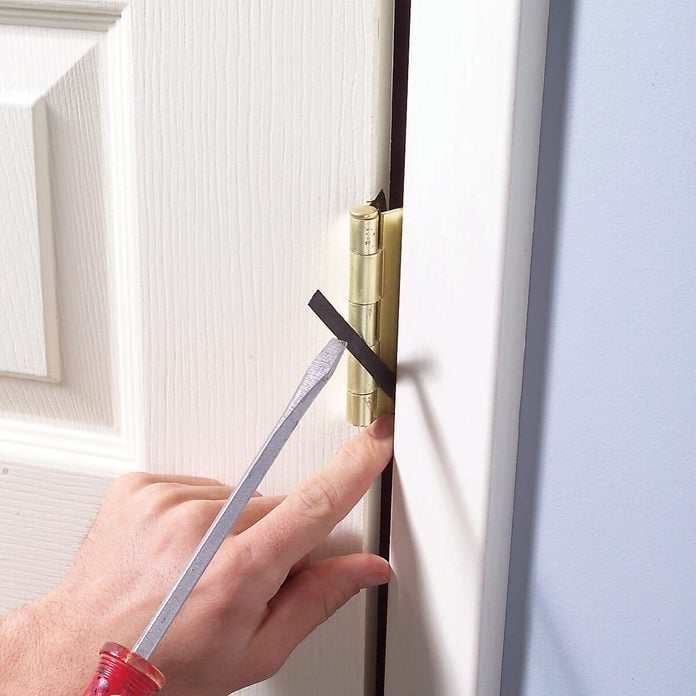
Shim Gapping Doors
If you have big gaps along the latch side of your doors, they were probably pre-hung in their frames at the factory and installed as a unit. The installer should have adjusted the frame with shims to leave about a 1/8 in. gap along the latch side, about the thickness of two quarters or coins. Sometimes the gap is far too wide. Here’s how to shim gapping doors.
Bonus! Build a Folding Workbench:
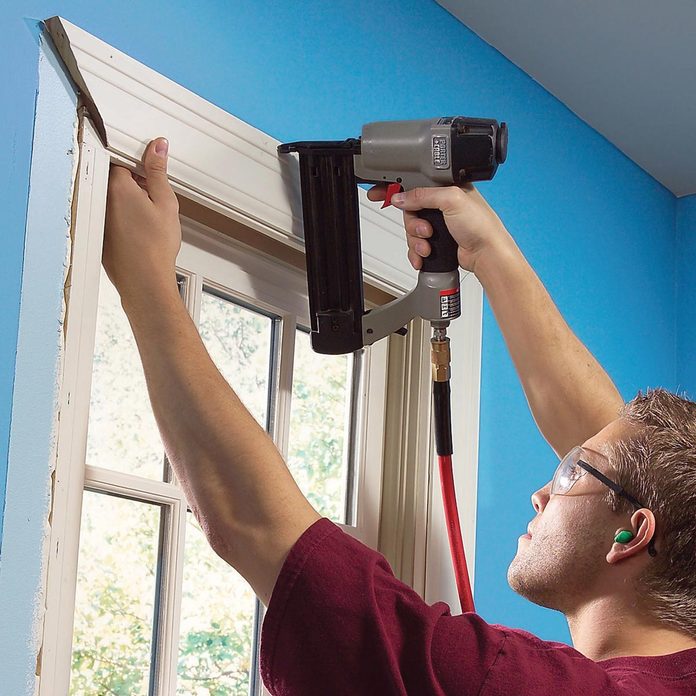
Stop Drafts Around Windows and Doors
If your windows or doors are a source of chilly drafts all winter long, the problem could be worn-out seals, weather stripping or thresholds. Then again, sloppy installation might be to blame. When cold weather arrives, hold the back of your hand near the edges of windows or doors to track down the source of leaks. If you feel cold air flowing out from behind the trim, chances are the spaces around the window and door jambs weren’t properly sealed.
Plugging these leaks is a time-consuming job: You have to pull off the interior trim, seal around the jambs and then reinstall the trim. But if your doors and windows are otherwise fairly airtight, the payoff can be big too. Stopping drafts not only makes your home more comfortable but also cuts energy bills.
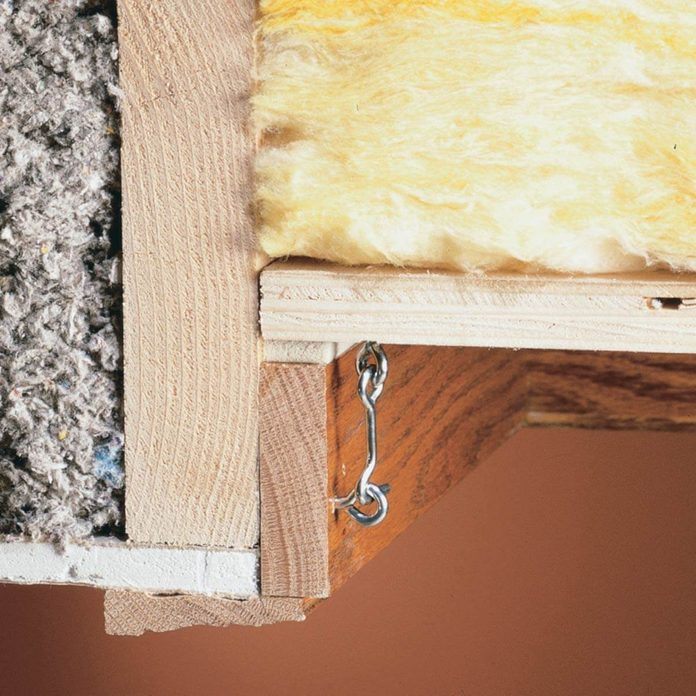
Seal Attic Air Leaks
Small air leaks into uninsulated attic space are a major source of heat loss in many homes. With some inexpensive materials and a day’s labor, you can save lots of money on heating every year by sealing these holes.
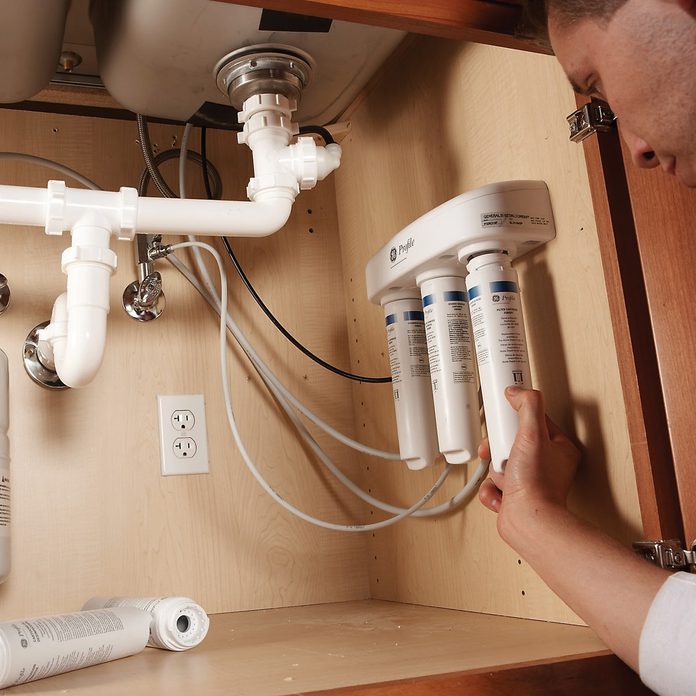
Install a Reverse Osmosis Water Filter System
If you buy lots of bottled or filtered water or you’re worried about your tap water, a reverse-osmosis water filter can be a good investment. It can provide 10 or more gallons of drinking water a day. A system costs from $150 to $300, plus $100 to $200 annually for replacement filters. You can do it yourself in less than two hours. Learn how to install this system.
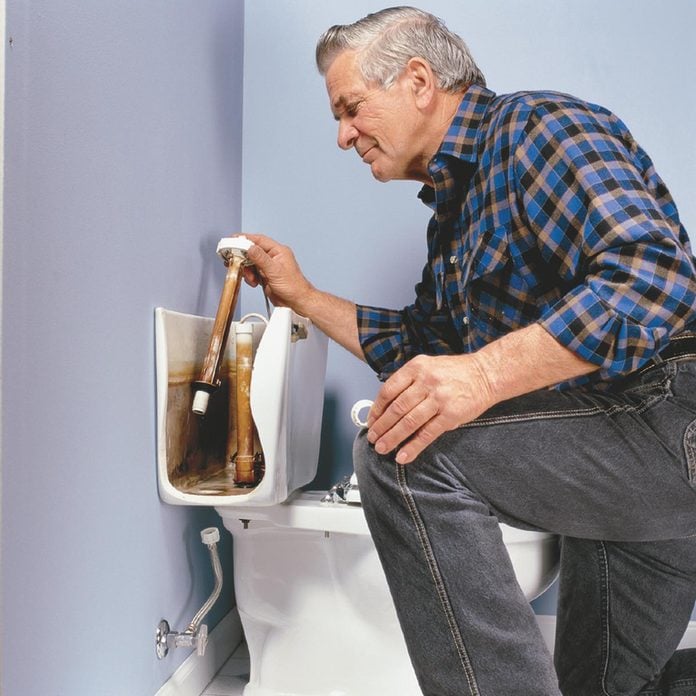
Stop a Running Toilet
Fixing a running toilet is a lot easier than you might think. Learn how to identify and solve the problem and don’t be intimidated by the tank’s inner workings. These DIY projects fixes are straightforward, even if you don’t have any plumbing experience. So stop wasting water and fix the toilet!
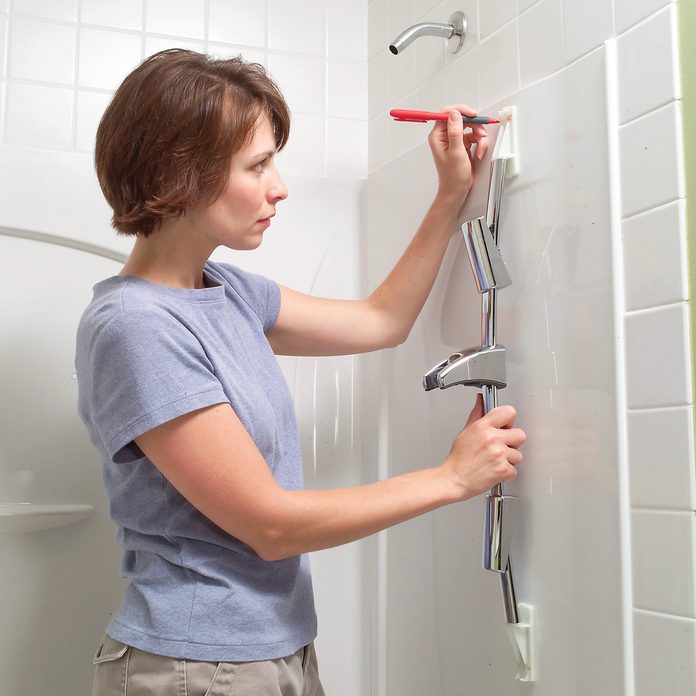
Install Toggle Bolts for an Adjustable Shower Head
Fastening towel bars, shelves or hooks to a fiberglass or plastic shower surround can be tricky. The surround is simply too thin to hold screws and there’s often a gap of one inch or more between the surround and the wall studs behind it. But with 1/8 in. toggle bolts, you can mount most light-duty hardware. Check out how to install an adjustable shower head bar as shown here.
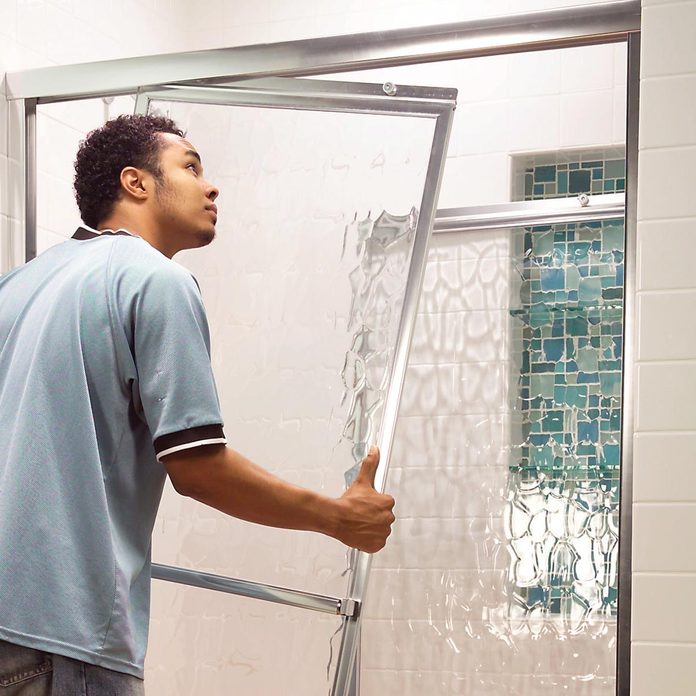
Adjust Dragging Sliding Shower Doors
A dragging shower or bathtub door can permanently damage both the door and the track if ignored for too long. Learn the steps needed to fix it and get it running smoothly again.
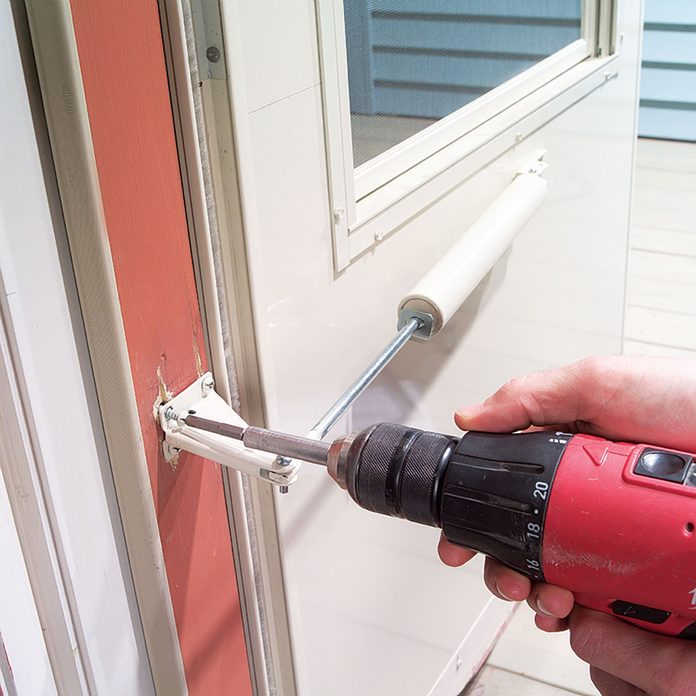
Fix a Storm Door Closer
Strong winds or heavy use can crack the door jamb that holds the storm door closer in place. A jamb reinforcer can repair the cracked jamb or stop the problem from happening in the first place. Learn how to fix your storm door closer here.
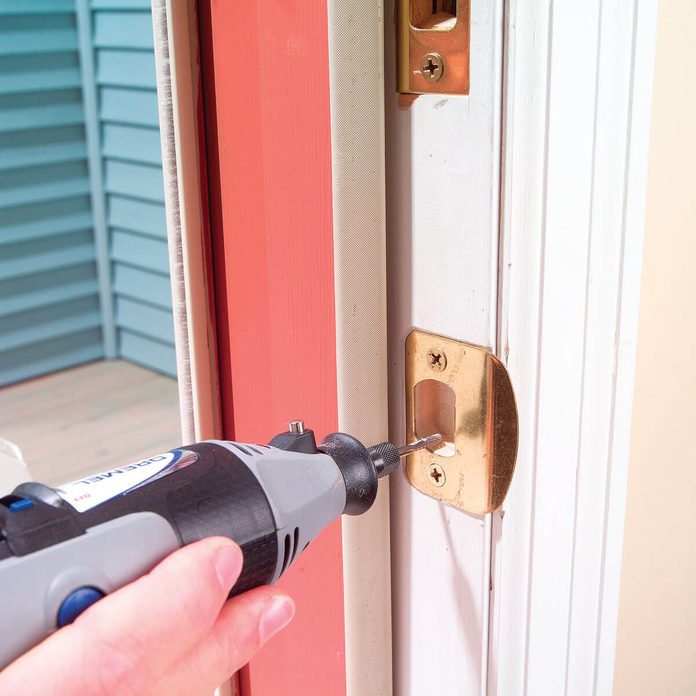
Fix a Door that Doesn’t Latch
When a house settles, doors sometimes stop latching properly because one side of the frame has sagged. You can fix the problem easily with a rotary tool and a metal-cutting bit. Follow these simple step-by-step instructions to get the job done right.
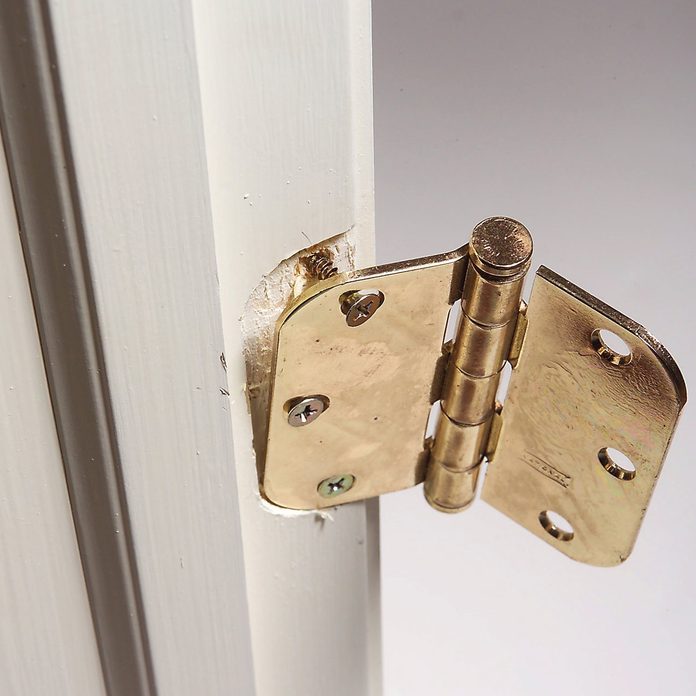
Fix Loose Hinges
One day the door closes smoothly; the next day it’s sticking. And the sticking grows worse as the weeks pass. It’s a common old house problem, but it can happen anywhere kids hang from doorknobs.
The screws holding the top hinges carry most of the weight of the door and are almost always the first to pull out, especially after they’ve been repeatedly tightened over the years. Here’s the best way to fix those loose hinges and beef them up.
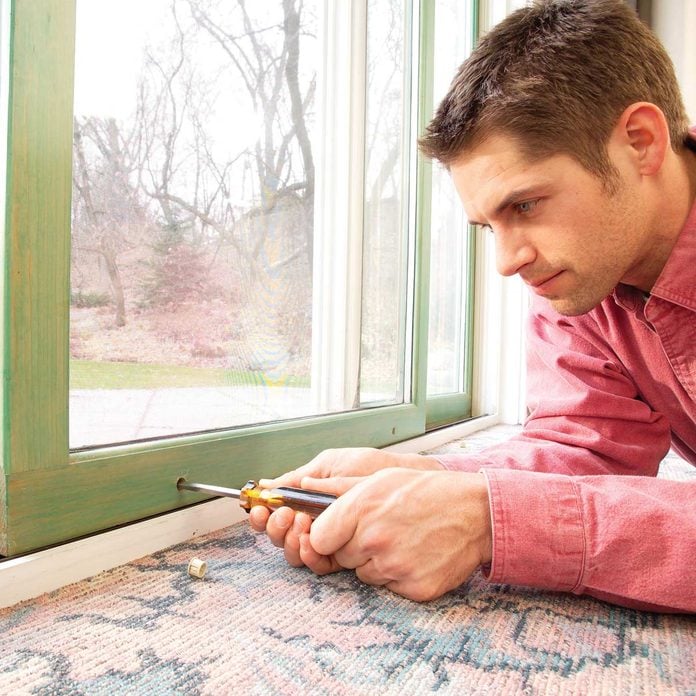
Unstick a Sliding Door
Sliding doors get sticky and hard to open when the wheels are out of adjustment or the track gets dirty. Here’s how to repair your sliding door and replace a flimsy screen.

Repair Any Torn Screens or Nets
Windows screens, mosquito nets, and similar barriers protect against inquisitive summer and fall pests, but only if they provide complete protection. And as long as the frame is in good shape repairs are easy and can be done in a few minutes. Here’s how to make your screen door or window look good as new.
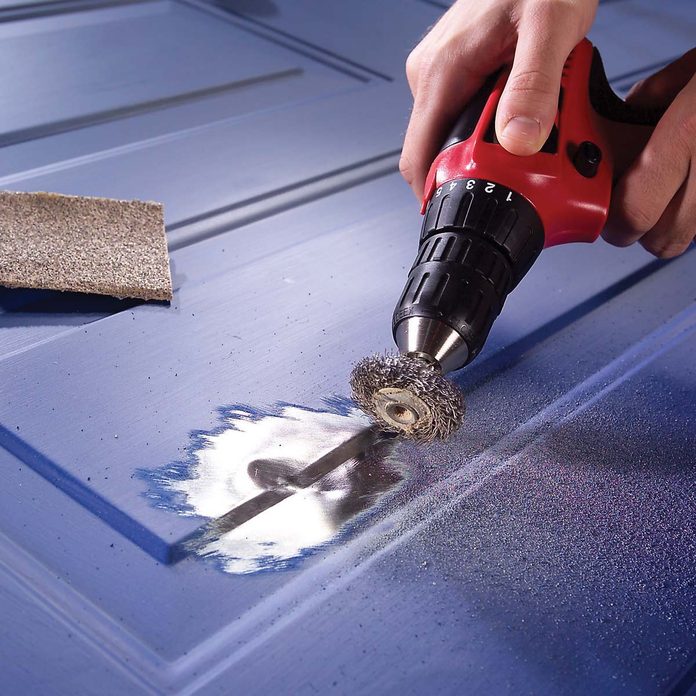
Take Out Dents in a Steel Door
Make an invisible dent repair in a steel door the same way you do it on your car, using the same auto body filler. Even a novice can master the simple techniques. Here’s how to fix your dents.

Fix Your Own Furnace
If your furnace quits or breaks down try these eight simple furnace solutions before you call for service help. You can solve the problem and avoid a $200 service call.
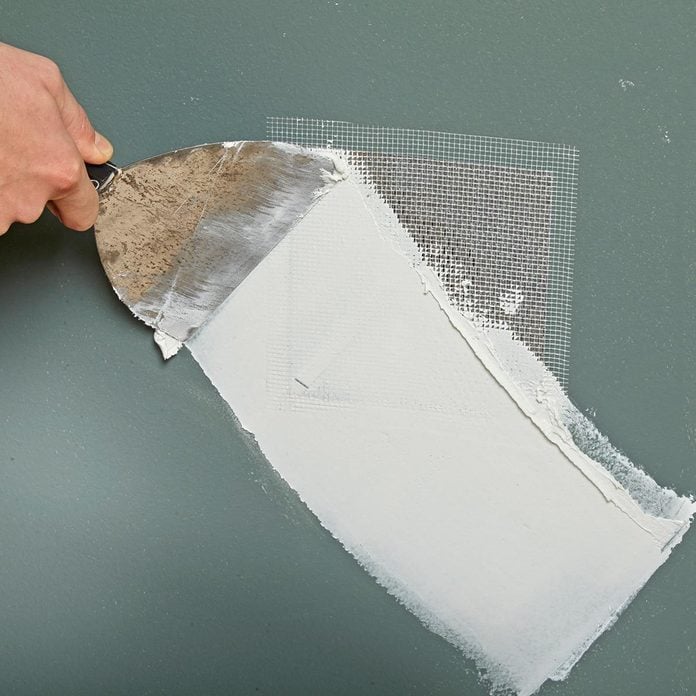
Repair Walls
Drywall is everywhere and it is surprisingly easy to damage. The good news is that the average drywall ding or hole can be easily patched. Cracks in drywall are also easy to fix.
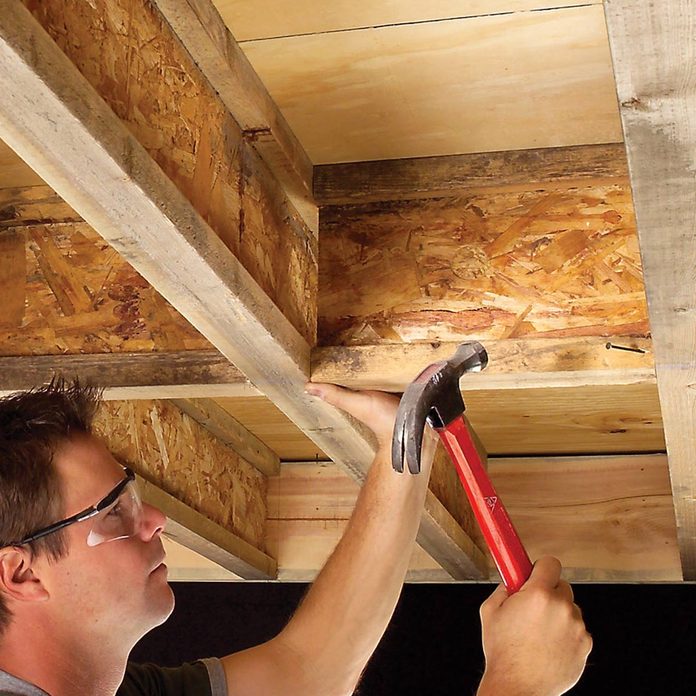
Solutions for a Bouncy Floor
We’ll show you three ways to stiffen up your bouncy floor — by adding bridging, installing plywood along the joists and adding a wall or beam under the floor. Any one of the three can solve your problem, depending on your situation. It’s not a lot of work or expensive.
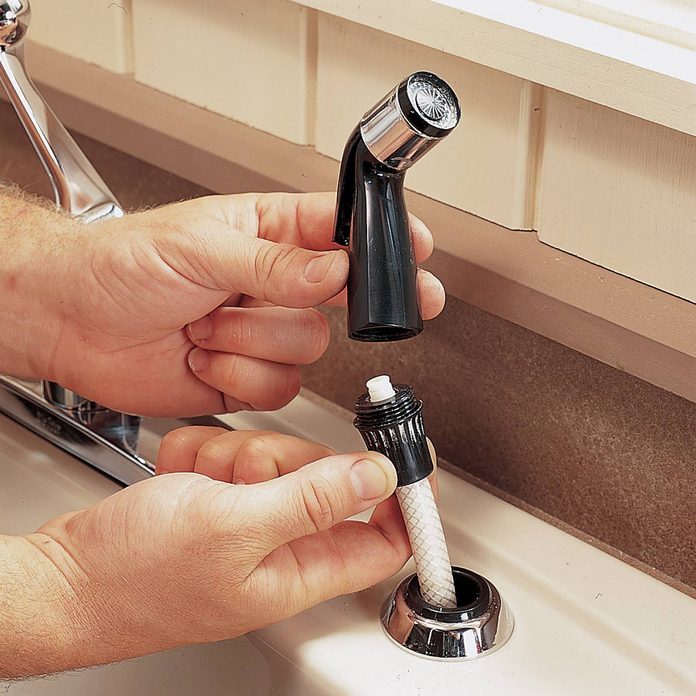
Replace a Sink Sprayer and Hose
Over time, sink sprayers often break or become clogged with mineral deposits. Or the sprayer hose can harden and crack or wear through from rubbing against something under the sink. The best solution in these cases is replacement. You can pick up just the sprayer head ($5) or a head and hose kit ($10) at a home center or hardware store. Here’s how to replace a sink sprayer and hose.
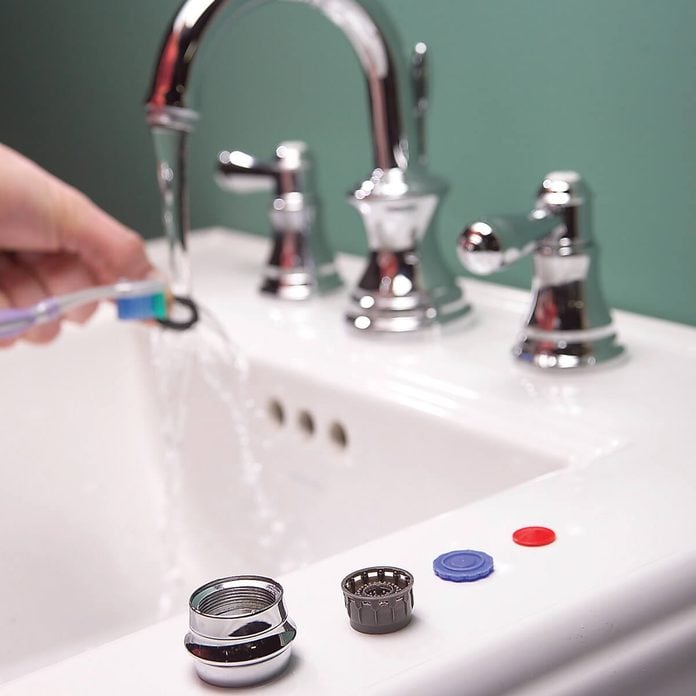
Unclog a Faucet
If the flow from your kitchen or bathroom faucet isn’t what it used to be, the aerator is probably plugged. An aerator can clog slowly as mineral deposits build up, or quickly after plumbing work loosens debris inside pipes. Usually a quick cleaning solves the problem. Gunk can also build up inside the faucet neck. Fortunately it’s an easy problem to fix.
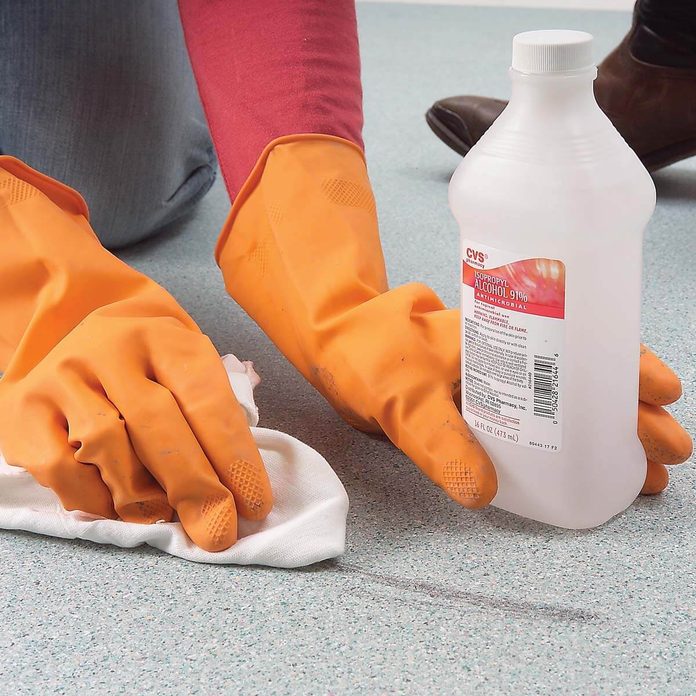
Remove Tough Stains from Vinyl Flooring
Sheet vinyl “resilient” flooring is so easy to clean that it may never require anything beyond damp mopping with a cleaner intended for vinyl floors. But if your floor has marks or stains that still won’t come off, you can use stronger stuff.
Isopropyl alcohol, sold as a disinfectant at drugstores, is a mild solvent. It’s the best cleaner for heel marks and works on other tough stains too. You can also use lighter fluid or mineral spirits. Remember that all these products are flammable; turn off any nearby pilot lights and hang rags out to dry before throwing them away. Learn how to use it to remove tough stains from vinyl flooring.
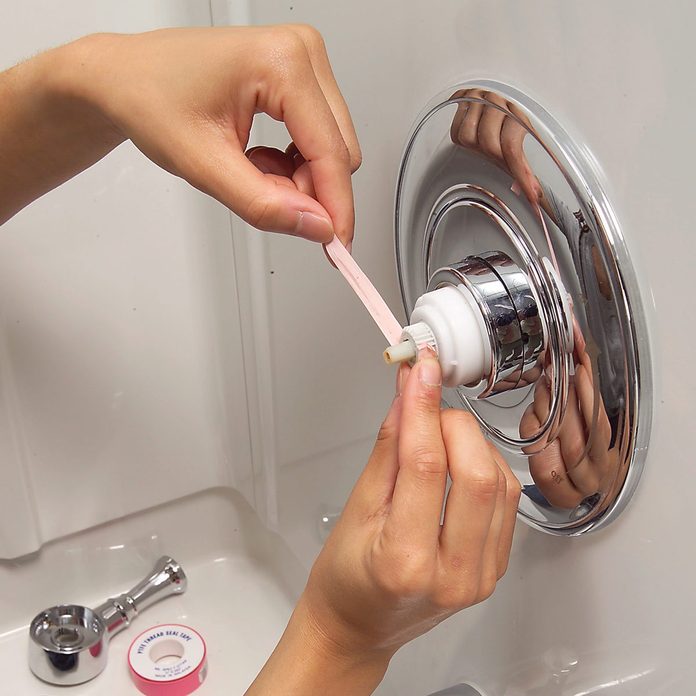
Tighten a Floppy Faucet Handle
A loose faucet handle will gradually grind away the valve stem that it’s screwed to, and should be tightened. Here’s a trick to use if the stem is already badly worn.
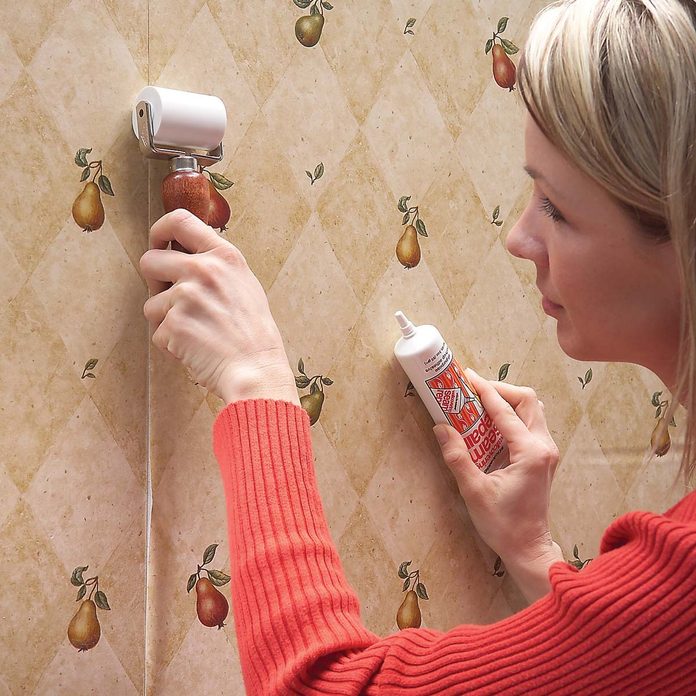
Fix Bad Wallpaper Seams
Repairing loose wallpaper seams is fairly simple. Just apply a seam repair adhesive. It provides a solid bond and will keep the seams from coming loose. It’s available at paint stores and home centers for less than $10. Squirt the adhesive directly onto the wall behind the loose seams, then press the edges back into place. Use a roller or straightedge as shown to firmly press the paper against the wall and drive out any air bubbles. Wipe away any excess adhesive with a damp sponge. Check out these pro paint and wallpapering tips.

Straighten Bubbling Wallpaper
Fix bubbles in wallpaper by cutting them with a razor knife. A small slit is all that’s needed. Then insert the end of a glue applicator in the slit and squeeze in a little adhesive. Wipe away excessive adhesive with a damp sponge and press the wallpaper against the wall to force out the air, using a plastic straightedge. The glue applicators and adhesive are available at paint stores and home centers for less than $10. Learn how to repair damaged wallpaper here.
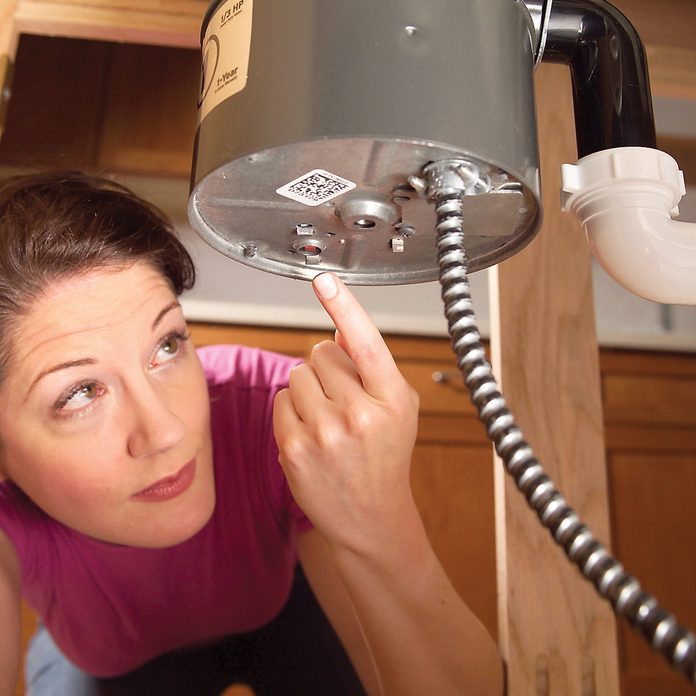
Push-Button Disposer Fix
If your disposer won’t start, push the reset button and give it a spin. All disposers have an overload feature that automatically shuts off the power when the motor becomes overloaded and gets too hot. Once the motor cools, simply push the reset button on the side of or under the unit. Check out these other simple fixes for common appliance problems.
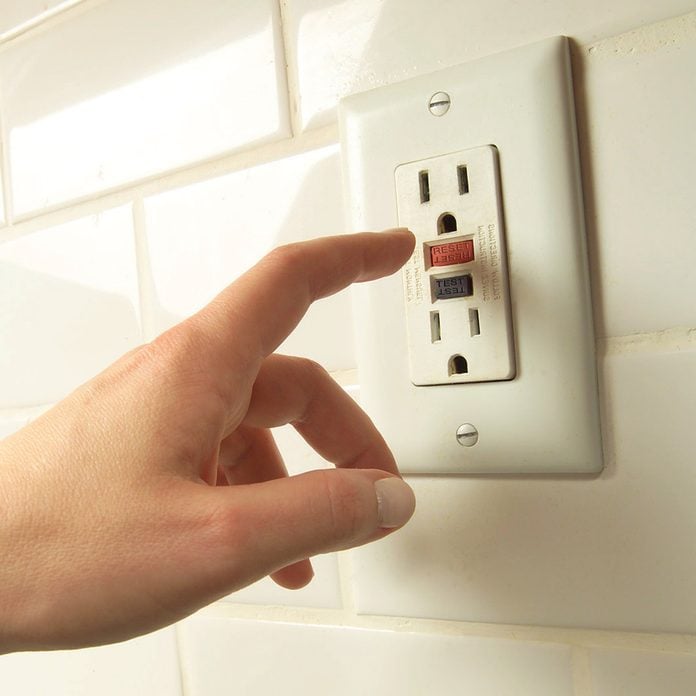
Reset the GFCI
When a light goes out or a switch doesn’t work, you should first check the main electrical panel for a tripped circuit breaker. But don’t stop there. Before you change out light bulbs and switches, see if a GFCI outlet (which may be upstream from the troubled light or outlet) has tripped. Sometimes all the bathrooms or the outside lights are powered through a single GFCI located in one bathroom or elsewhere, such as in a basement. Simply push the reset button on the GFCI and you could be back in business.
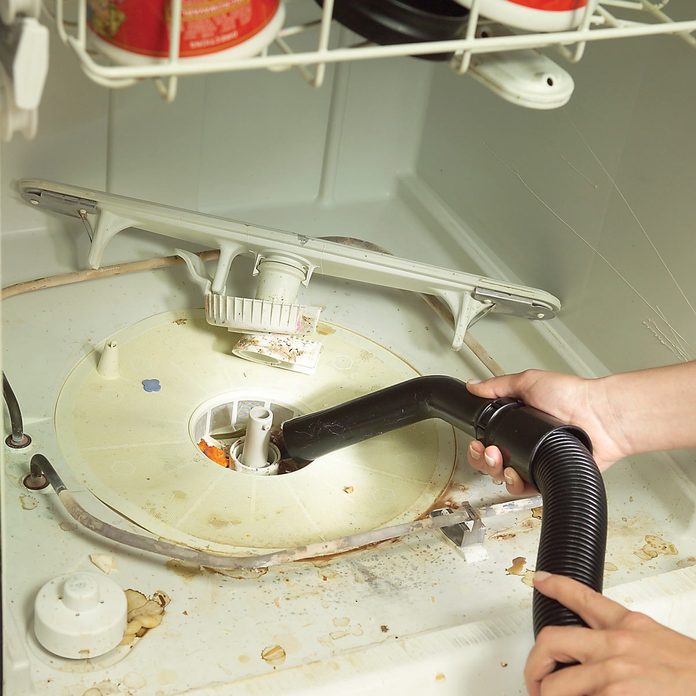
Clean the Dishwasher Filter
When your dishwasher no longer gets your dishes clean, a food-filled filter is most often to blame. If it’s clogged, water can’t make it to the spray arms to clean the dishes in the top rack. The fix takes two minutes. Simply pull out the lower rack and remove the filter cover inside the dishwasher. (Check your owner’s manual if you can’t spot the filter.) Then use a wet vacuum to clean off the screen. Check out these other dishwasher cleaning tips.
While you’re there, slide the nearby float switch up and down. If it’s jammed with mac and cheese, you won’t get any water. If the cover sticks, jiggle it up and down and clean it with water.
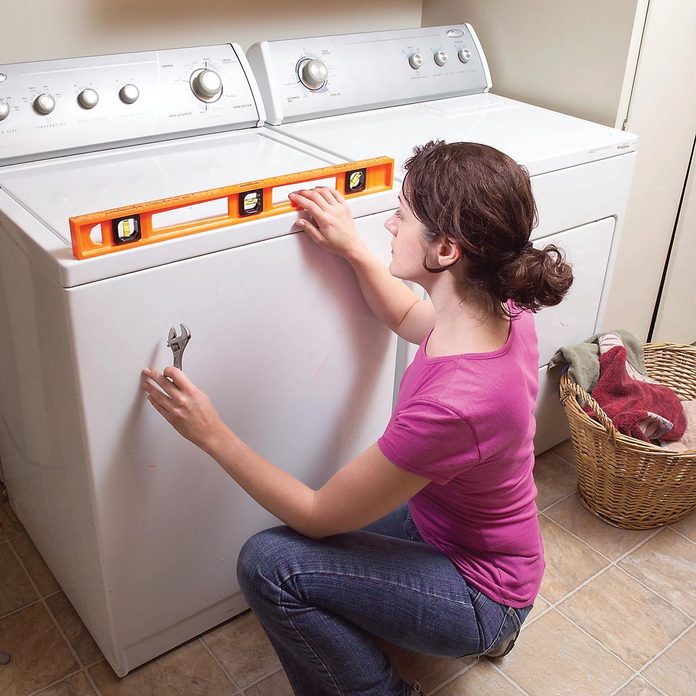
Quiet a Noisy Washer
When a washing machine cabinet rocks, it makes a horrible racket during the spin cycle. The solution is to simply readjust the legs. Screw the front legs up or down until the cabinet is level. When both legs are solid on the floor, tighten each leg’s locking nut. In most washers, to adjust the rear legs, gently tilt the machine forward and gently lower it down. The movement will self-adjust the rear legs.
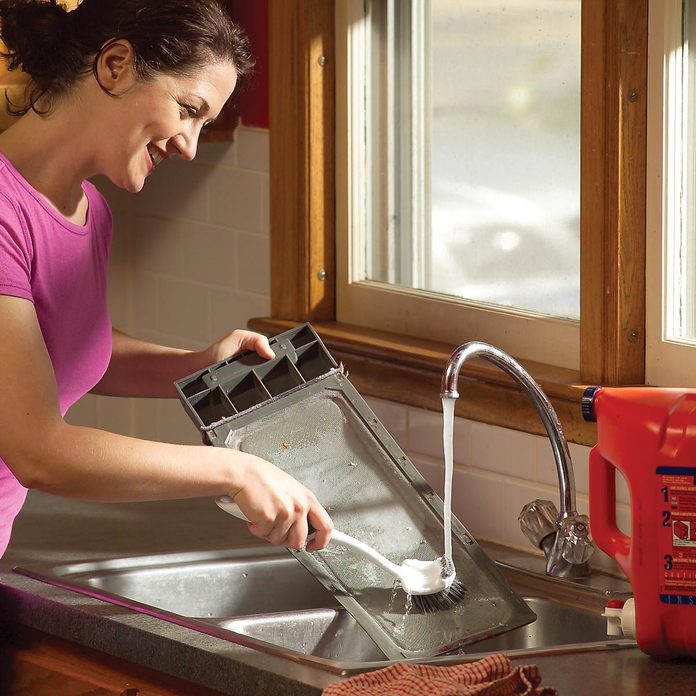
Change the Dryer Filter
A common cause of poor drying is a clogged lint filter. The filter may look clean, but it may actually be covered by a nearly invisible film caused by dryer sheets. This film reduces airflow and forces the thermostat to shut off the heat before your clothes are dry. Test your filter by pouring water into it. If the filter holds water, it’s past time to clean it. Pull out the filter and scrub it in hot water with a little laundry detergent and a stiff kitchen brush.
Also check the outside dryer vent for any lint that may have built up there.
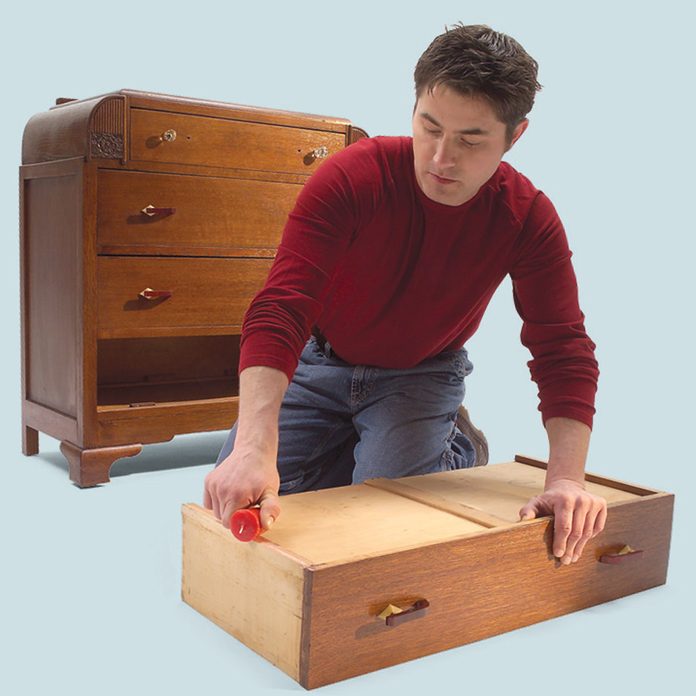
Lubricate Sticking Drawers
Candle wax is a handy lubricant for old drawers or any furniture that has wood sliding against wood. Just rub a candle hard against the skids under the drawer. Rub the tracks inside the chest or cabinet too.
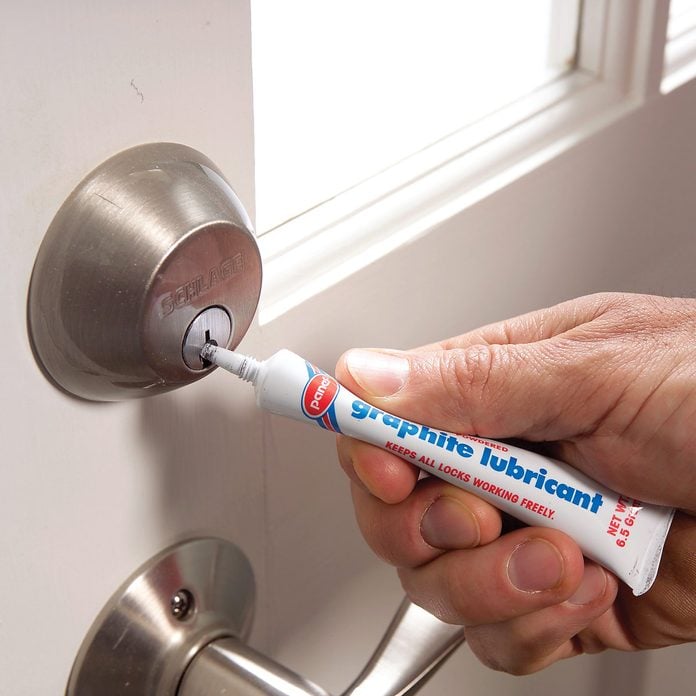
Lubricate Sticking Locks
If your lock turns hard or your key doesn’t slide in smoothly, the lock might be worn out. Then again, it may just need lubrication. Squirt a puff of powdered graphite into the keyhole. Unlike liquid lubricants, graphite won’t create sticky grime inside the lock. A tube costs about $3 at home centers.
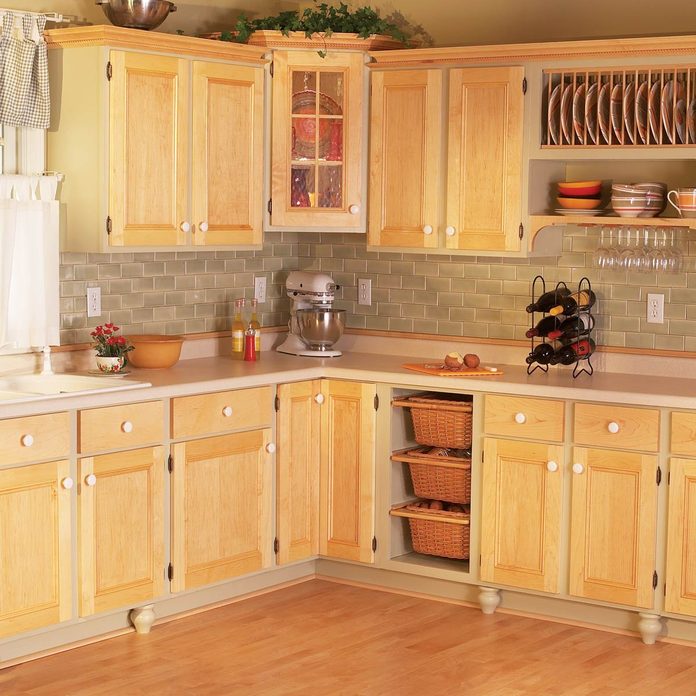
Rejuvenate Your Cabinets
If you’re pleased with the basic layout and function of your kitchen but want to update the look — and add a few new features — learn how to rejuvenate your cabinets here. We’ll show you how paint, new cabinet doors and drawer fronts, moldings and a few accessories can transform your kitchen. The total cost for all of the cabinet upgrades shown here was $2,100 (not including wall tile). With the average full-scale kitchen remodeling project costing more than $30,000 (and about one-third of that amount spent on cabinetry), you can see a big impact for a small cost.

Install a Rock-Solid Stair Rail
If you have a loose stair rail, a weak stair rail or no rail at all, fix the problem by installing a solidly anchored railing. Would your stair rail hold up to three energetic youngsters hanging on it like this? If you’re not sure, or if you have stairways with missing rails, now’s the time to fix the problem. More accidents happen on stairways than anywhere else in the house, and a strong stair rail goes a long way toward making stairs safer and easier to use.
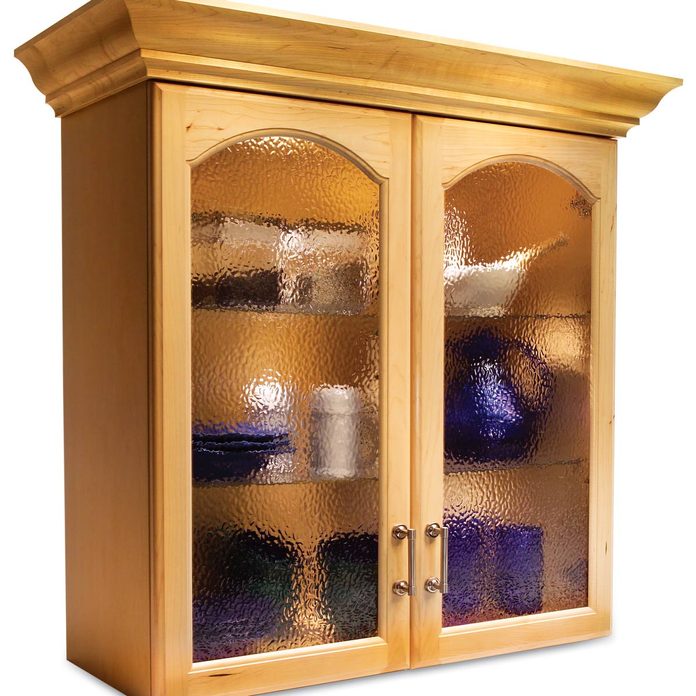
Convert Wood Cabinet Doors to Glass
A pair of glass cabinet doors can add a designer touch to any kitchen. They can turn an ordinary cabinet into a decorative showcase or simply break up an otherwise monotonous row of solid doors. We recommend this alteration only for frame-and-panel cabinet doors, where you can replace the inset wood panels with glass. Converting the two doors shown here took about two hours. Learn how to convert wood cabinet doors to glass here.
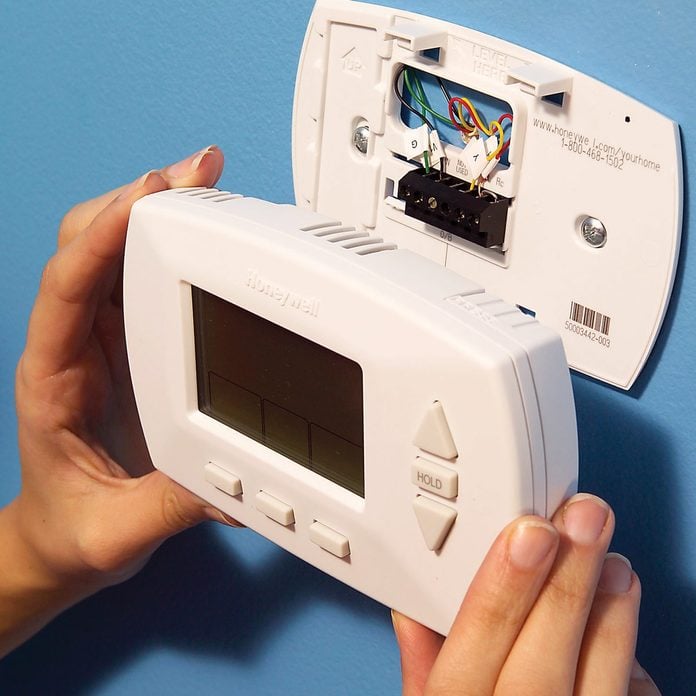
Install a Programmable Thermostat
When it comes to energy savings, few upgrades pay off as quickly as a programmable thermostat. If you turn down the heat five degrees at night and 10 degrees during the day when no one is home, you’ll cut your energy bill by five to 20 percent. If you raise the temperature the same amount during the cooling season, your savings will be similar. You can do this with a manual thermostat, but a programmable model never forgets to turn down the heat at night and it can raise the temperature before you get out of bed in the morning.
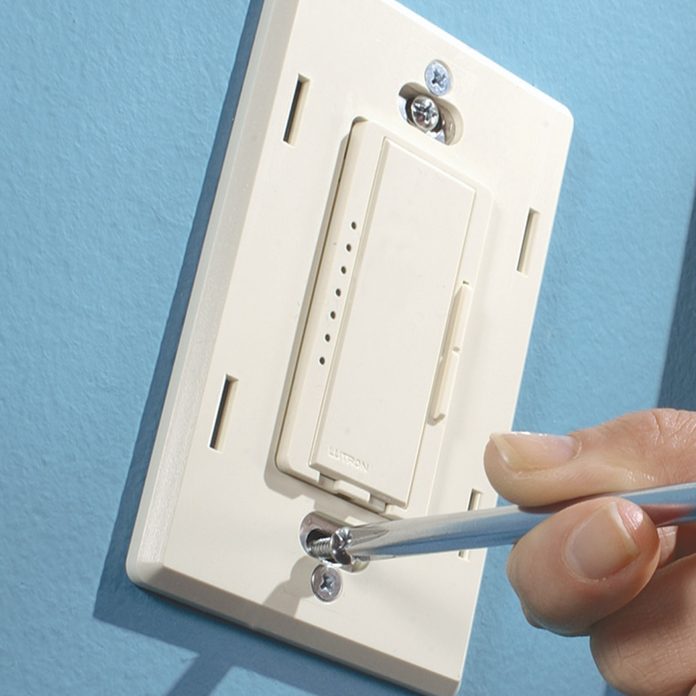
Install a Dimmer Switch
There’s more to changing a switch than connecting a few wires. You have to check grounding and box size for a safe, first-class job. It’s easy to install a dimmer switch, but make sure to upgrade the wiring if necessary to make it safer and meet Electrical Code requirements. We’ll show you how to assure a safe dimmer switch installation.
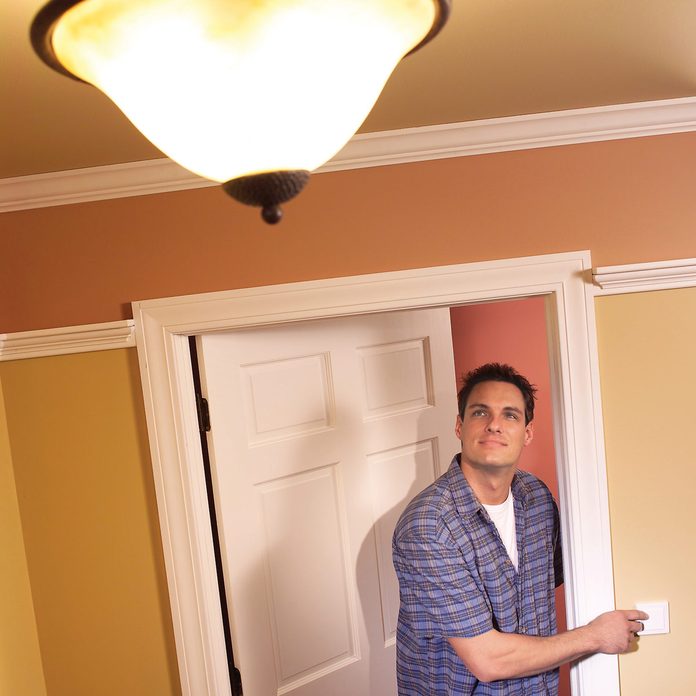
Add a Wireless Switch
Putting in a switch for an overhead fan, switching an outlet, or converting a two-way switch to a three-way switch can be a nightmare if you have to fish new wire through old walls and floors. With wallpapered walls and textured ceilings, it can be impossible. Until recently, the only way around the problem was to buy a clunky battery-powered transmitter/receiver.
Now a different type of switch is available: It converts the energy of a human finger pushing a switch into a radio signal strong enough to be picked up by a receiver in a light fixture or outlet up to 150 ft. away. Only 1/2 in. thick, the switch can be mounted on walls or woodwork or even glued to glass. The receivers come in two types — one that’s hidden inside the light box or outlet, and one that plugs into the outlet.
Learn how to install this new electrical switch without any wiring or batteries.
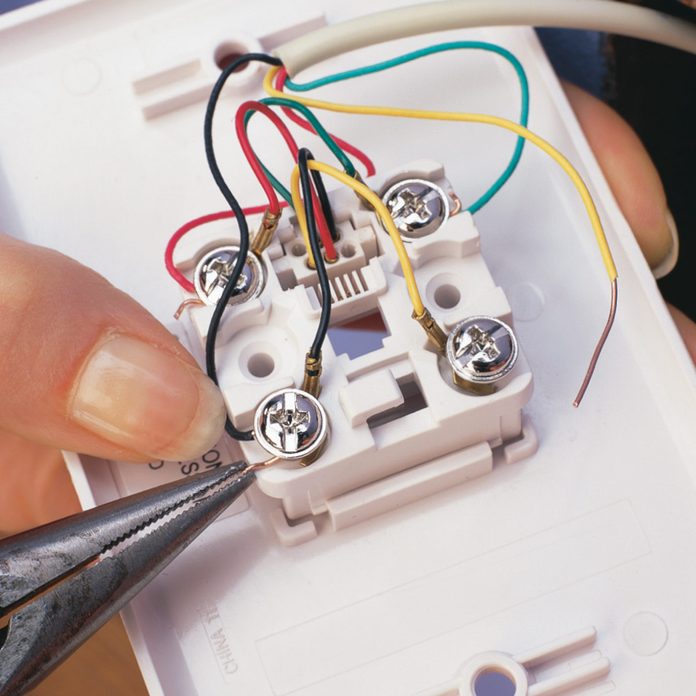
Replace a Phone Jack
When your phone quits working or static develops on the line, your phone jack may need to be replaced. We’ll show you how to handle the phone jack wiring and replace that phone jack for less than $5.
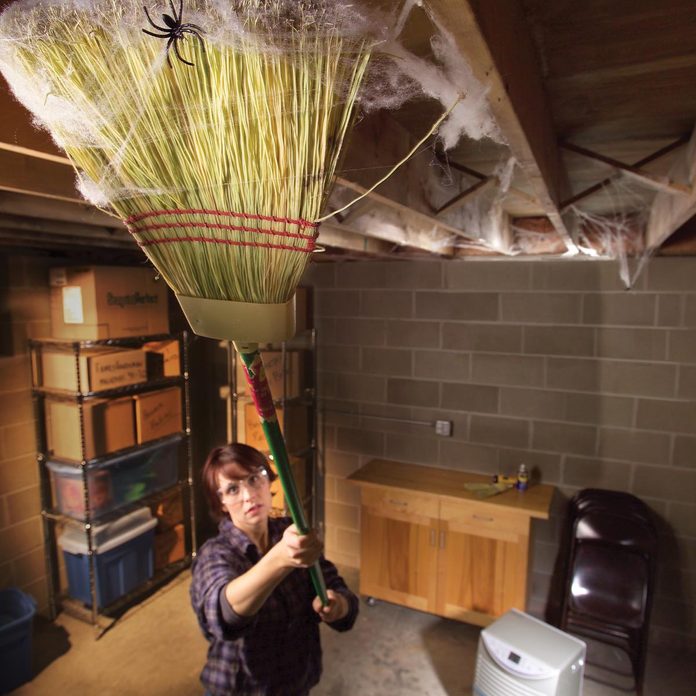
Critter-Proof Your Home
If unwanted critters are waging war on your house, it’s time to fight back. Here are some effective pest-fighting strategies. We’ll give you tips about how to close the entryways that let critters in, and also how to evict them if they manage to get past your defenses.
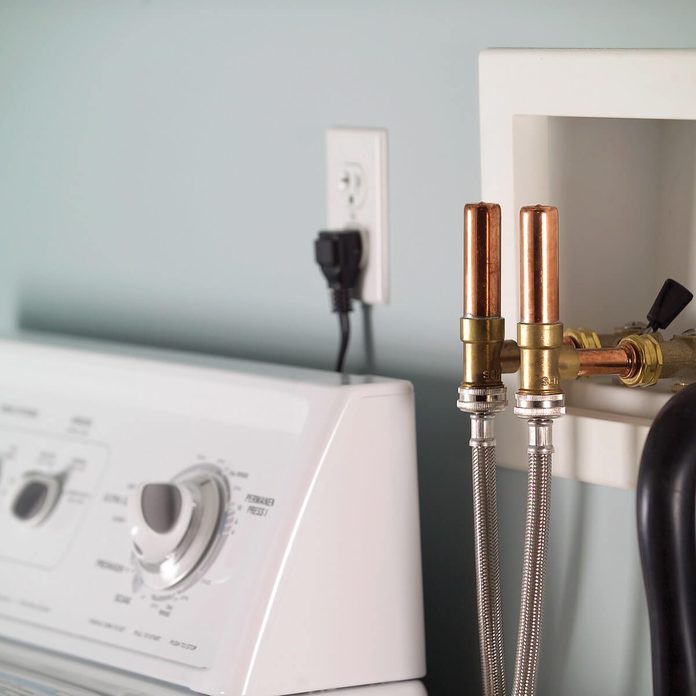
Stop Water Hammer
If your plumbing bangs and clangs like a truckload of scrap metal, you’ve got “water hammer.” Water develops momentum as it flows fast through pipes. When a valve closes quickly and stops the flow, that momentum shakes and pounds pipes. Water hammer arresters cure this condition with a cushion of air that absorbs the momentum. We’ll show you how to stop water hammer here.
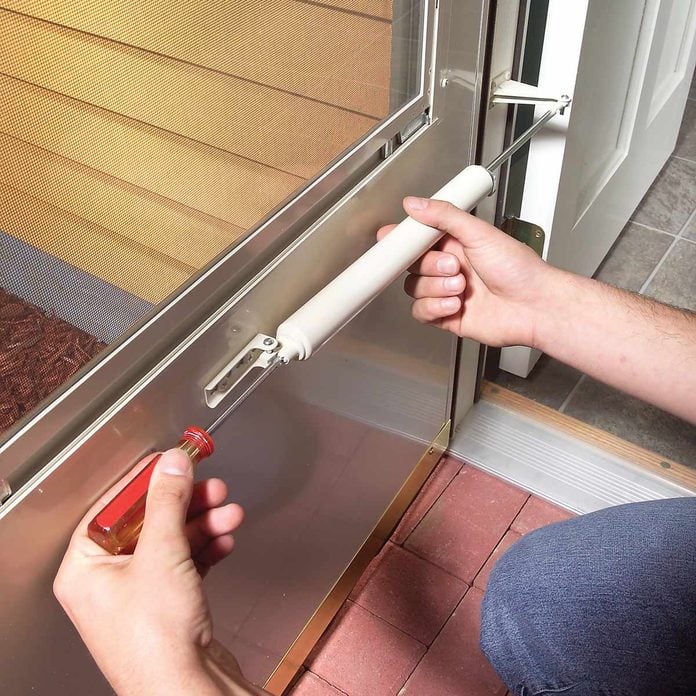
Adjust Storm Door
If your storm door slams shut or won’t close hard enough to latch, try a few simple adjustments to make it close just right. Make adjustments to your screen door closer twice a year when you exchange the screens and glass storm panels. Move the long connecting pin into the forward hole (for winter) or rear hole (for springtime) of the closer each time you change the storms or screens. If necessary, adjust the pressure control screw on the closer as well. Learn how to adjust your storm door here.
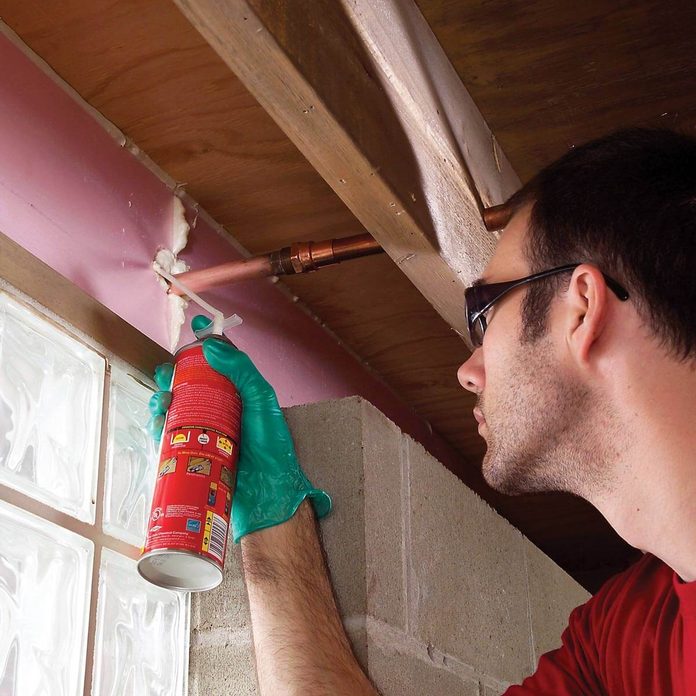
Insulate Rim Joists
In just a couple of hours, you can seal and insulate your rim joists, which are major sources of heat loss in many homes. This project will help lower your heating costs and save you money. Insulating the rim joists is one of the best things you can do to make your home more energy efficient. And it’s easy, too, so anyone can do it. Learn how to insulate your rim joists here.
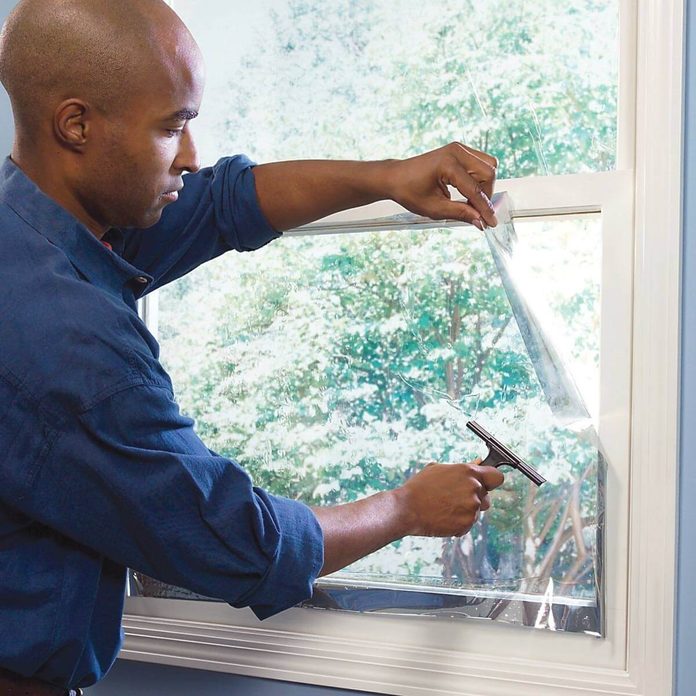
Apply Heat Reducing Window Film
If you have room that gets too hot from direct sunlight, consider installing a heat control window film to keep the room cooler. These films reflect the sun’s heat and ultraviolet rays, and reduce glare without obscuring the view. The more direct sunlight coming through the window, the more the film will help (and it may lower your air-conditioning bills!).
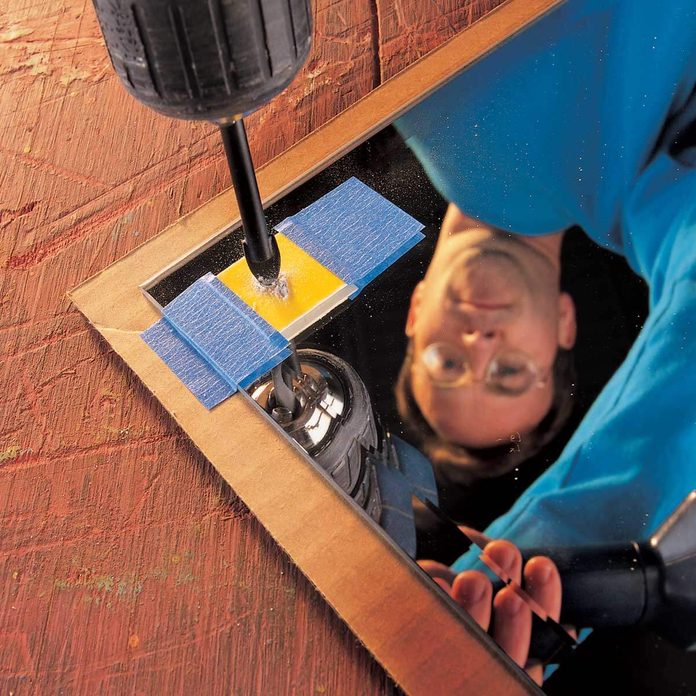
Drilling Through Hard Stuff
Making holes in soft materials like wood is easy. You just stick a standard drill bit in your drill and pull the trigger. But use this approach on harder materials like metal, masonry, glass or tile, and you’ll waste time, ruin drill bits and even wreck your workpiece.
Here you’ll learn how to choose the right bits and techniques for making holes in hard materials.